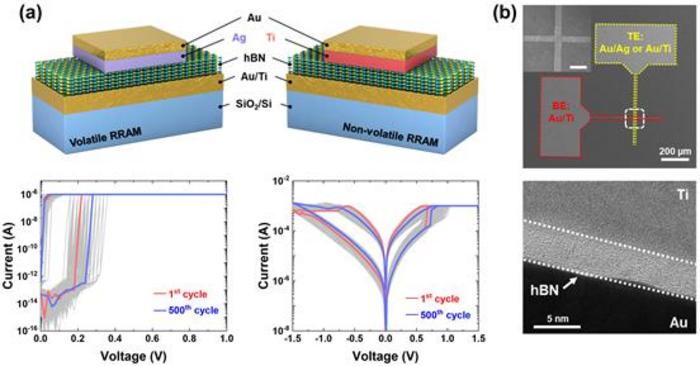With the emergence of new industries such as artificial intelligence, the Internet of Things, and machine learning, the world’s leading companies are focusing on developing next-generation artificial intelligence semiconductors that can process vast amounts of data while consuming energy efficiently.
Neuromorphic computing, inspired by the human brain, is one of them. As a result, devices that mimic biological neurons and synapses are being developed one after another based on emerging materials and structures, but research on integrating individual devices into a system to verify and optimize them is still lacking. In order for large-scale artificial neural network hardware to become practical in the future, it is essential to integrate artificial neuron and synaptic devices, and it is necessary to reduce mass production costs and energy usage by fabricating devices with the same materials and structures.
A team led by Dr. Joon Young Kwak of the Center for Neuromorphic Engineering at the Korea Institute of Science and Technology (KIST) announced that they have implemented an integrated element technology for artificial neuromorphic devices that can connect neurons and synapses like “Lego blocks” to construct large-scale artificial neural network hardware.
The team fabricated vertically stacked memristor devices using hBN, a two-dimensional material that is advantageous for high integration and ultra-low power implementation, to demonstrate biological neurons and synapses characteristics. Since the team designed artificial neuron and synaptic devices with the same material and the same structure, unlike conventional silicon CMOS-based artificial neural imitation devices with complex structures using multiple devices, the devices developed by the team have secured ease of process and network scalability, paving the way for the development of large-scale artificial neural network hardware.
By integrating and connecting the developed devices, the team also successfully implemented the “neuron-synapse-neuron” structure, the basic unit block of an artificial neural network, in hardware to demonstrate spike signal-based information transmission, which is how the human brain works. By experimentally verifying that the modulation of spike signal information between two neurons can be adjusted according to the synaptic weights of the artificial synaptic device, the researchers showed the potential of using hBN-based emerging devices for low-power, large-scale AI hardware systems.
“Artificial neural network hardware systems can be used to efficiently process vast amounts of data generated in real-life applications such as smart cities, healthcare, next-generation communications, weather forecasting, and autonomous vehicles,” said KIST’s Dr. Joon Young Kwak, explaining the significance of the research achievement. “It will help improve environmental issues such as carbon emissions by significantly reducing energy usage while exceeding the scaling limits of existing silicon CMOS-based devices.”
If our reporting has informed or inspired you, please consider making a donation. Every contribution, no matter the size, empowers us to continue delivering accurate, engaging, and trustworthy science and medical news. Independent journalism requires time, effort, and resources—your support ensures we can keep uncovering the stories that matter most to you.
Join us in making knowledge accessible and impactful. Thank you for standing with us!

